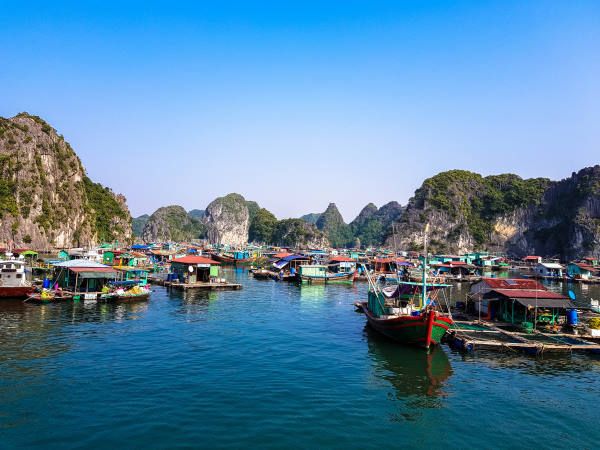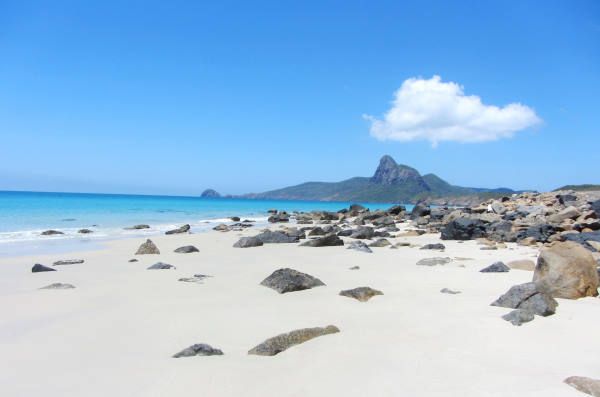Victim of its own success, Vietnam suffers from tourism since 2008. The rapid increase in the volume of visitors puts enormous pressure on the quality of the reception of tourist sites. It is because of the bad management of the flow that the human relationship between travelers and inhabitants deteriorates. Fortunately, there are solutions to discover Vietnam differently. This article proposes you some possible alternatives.
Van Thai Nguyen, manager of TTB Travel agency, our partner for a tailor-made and turnkey Ethik Trip in Vietnam, proposes us an article to present us the possible alternatives to sustainable tourism in Vietnam. And you will see, the country is full of treasures, less frequented and more authentic.
Lan Ha Bay, the base to discover Vietnam differently and forget Halong Bay
This natural jewel is drowned in the pollution of which the 5 million tourists are the authors. The race to gigantism leads to the multiplication of cruise ships. Nowadays, Halong Bay looks like a symphony of amusement parks and "maritime parking". People come to visit Halong Bay for its karst formatics. You can see this kind of landscape in Lan Ha Bay. It is important to know that only a part of the geographical area is recognized by Unesco. Halong Bay covers barely 30% of the area. This means that there are places that are much less frequented. Located 15km from Halong Bay, Lan Ha Bay offers similar characteristics, but with 10 times less tourists.

To visit Vietnam differently is also to use soft mobility once on the spot. That's why it is possible to explore Lan Ha bay by boat cruise, combining several activities. The navigation can be punctuated by swimming, cycling on the island of Cat Ba next door, or kayaking.
Seeing rice terraces in Sapa or Hoang Su Phi, we explain you how to choose
Formerly a summer resort for French settlers, Sapa attracts visitors with its beautiful rice terraces and ethnic diversity. In just 30 years, the haven of peace has been transformed into a monstrous construction zone. The city, with a population of 60,000, is expected to absorb 3 million visitors each year. Amusement parks are built to serve Vietnamese and Chinese customers. Traveling to Sapa means contributing directly to the dehumanization of its inhabitants and the folklorization of Vietnamese culture. The loss of ethnic identity is a big issue. For the moment, it is still complicated and difficult to repair the damage.
There are equivalents of Sapa in North Vietnam. To travel differently, we can mention the region of Hoang Su Phi, located in the far north. This remote area is populated by about twenty ethnic minorities. We find the same tribes as Sapa: H'mongs, Dzaos, Tays. Originally from southern China, these ancient nomads adopt the same ancestral traditions. They carve rice terraces and grow tea. Travelers can enjoy similar experiences in Sapa: hiking, staying with ethnic groups, etc.
Dream beach: the fight hu Quoc Vs Con Dao
In 2005, there was talk of a paradise island of Phu Quoc. In wanting too much to compete with neighboring Thailand, the State decided to transform the island into "Singapore bis". Immediately, the waves of real estate speculation participate in the destruction of primary forests and the life of fishermen. Nowadays, Phu Quoc Island looks like a bulldozer battlefield! The contrast between the luxury of the resorts and the desperate cry of the island population strikes the tourists.

In Vietnam, there are very few islands open to tourism. Apart from Phu Quoc, the only alternative is Con Dao Island, located 45 minutes by plane from the mainland. Because of the difficult access, this place is away from mass tourism. The accommodations, although few, are rather upmarket. Certainly, this limits considerably the number of visitors. On the other hand, the filtering of visitors allows to better preserve its natural reserve. Apart from pristine beaches, one can also observe the reproduction of sea turtles.
Hoi An differently
Listed by UNESCO, the ancient seaport shares many similarities with its sister city Venice. Its tiny old town suffers the same consequences as the Serenissima (we have already mentioned the consequences of mass tourism in Venice). Its native population is driven out of the city center to make room for souvenir stores and restaurants. In high season, Hoi An is the epic of a bastion besieged by hordes of Chinese and South Korean tourists. Finally, the resorts resolutely turned to the Western clientele ravage the coastline.
